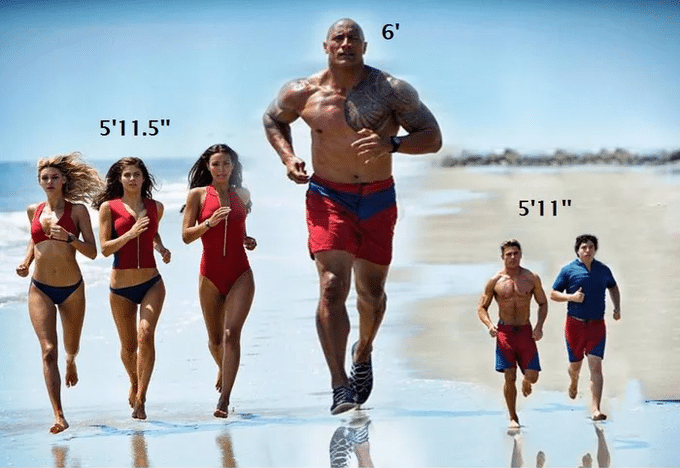5'11.75" here. Some guys have gotten legitimately angry with me when I say my exact height since they're a little shorter than me but claim to be 6' or taller.
In the NFL, players are measured at the combine and their heights are rounded to the nearest inch - so you and I would both be 6' by NFL standards. I'd imagine the NHL does something similar, which is why Matthews who is probably a hair over 6'2" is listed at 6'3"
I think the NFL Combine happening a bit later in players' life/career tends to reduce a little bit of the room to exaggerate size later. It's all a big spectacle with numbers readily available to the public. And because they're all 21-25+ years old, it's a lot less believable if their height starts creeping up somehow
after that combine measurement.
Whereas with the NHL...the draft combine likes to hide information away, and because we're talking about 17-18 year olds anyway, it does introduce at least a
small measure of plausibility that some players could ultimately play an inch or two taller than their combine measurement.
Malkin has to be pushing 6 ft 5. Looks like one of the tallest players out there whenever I catch a Pens game. 6 ft 3 seems like the rare understated listed height.
I think this is also kind of hinting at a couple other elements in the "height/size" discussion.
1. Height is just
one dimensional measurement of "size". The actual build and frame of a player can make a big difference, and particularly affect the "appearance of size" on and off the ice. You can have two guys of identical height, but when you start talking about things like "wingspan" that can be a pronounced difference. Functionally and visually.
ie. This is what is meant when people talk about a "Projectable Frame". In actual practice, that sort of functional length and reach is more important than how high the top of their head is above ice level. Some guys are built really lanky with big wingspan, long legs, etc. that competes with their height. Some are built really compact and stalky with shorter limbs. Some players come with broad shoulders and a big barrel chest that makes them look a lot "bigger" and more "imposing" and generally lets them carry more weight more effectively. Some are just "small boned" and tend to always look "smaller" than even their
actual height. There's a whole huge range of that stuff that goes well beyond just being 6'0" or whatever.
An incredibly pronounced example of that, was Cody Hodgson. I think he was generally listed at ~6'0"? He may well have even been that, or 5'11" or close enough. But you will not find a stumpier, shorter-limbed player of that height. It was glaringly obvious on the ice. Giving up effective range/reach to "smaller" players, and seriously impacting his skating stride/efficiency and potential for improvement there.
Which leads into the second aspect of this...
2. Different skating styles can
also really impact perceptions of a player's "size" on the ice. Malkin definitely
does look very tall on the ice. He obviously
is quite tall, but i think it's accentuated by his skating and playing style. He plays a lot very "upright". Elias Pettersson is also an extremely lanky, upright skater that tends to make him actually look "taller" on the ice.
Whereas someone like Brady Skjei skates around like he was folded in half in a box for too long and got stuck that way. Which tends to make him actually look a fair bit "shorter" than he is, but also somehow...heavier?
That sort of stuff can all really impact perceptions of "size" on the ice. It can have practical, functional effects too.
 I'm 6' (183cm) in bare feet with a shaved head.
I'm 6' (183cm) in bare feet with a shaved head. ) to demand that they're 6'
) to demand that they're 6'

